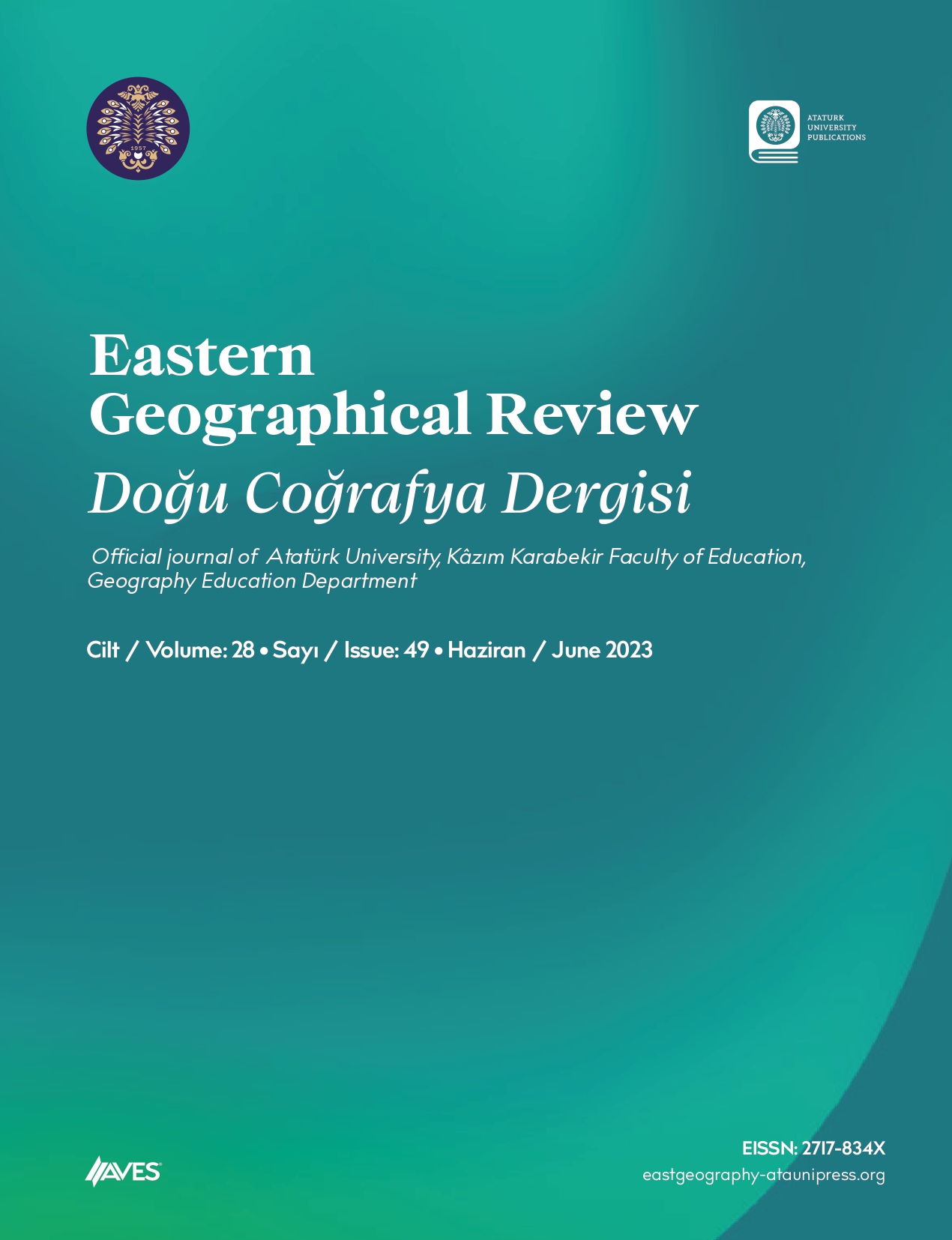This study aims to explain the relief characteristics of the Kızılırmak Basin south of the North Anatolian Fault Zone. For this purpose, the topographic position index, absolute height, hypsometric curve and integral, relative height, aspect, topographic openness, slope, slope length, slope form, terrain ruggedness, basin relief, relief ratio, and ruggedness number analyses were applied. It is also understood from morphometric parameters that the elements that determine the relief characteristics in the north of the study area are the high tectonic activity and lithological elements of the North Anatolian Fault. In the south, lithological and tectonically changing conditions and early established drainage systems toward the vicinity of Uğurludağ have led to the emergence of a more flattened and mature topography. The fact that the area around the Salur Strait in the south and the Hacıhamza Strait in the north, which separate these two different sections, shows some morphometric parameters related to a young topography indicates that the drainage relationship between the North Anatolian Fault Zone and the Central Anatolian Neogene lakes in the south was established in a very young geological past. Generally, the flow energy of the river basins is increased by the high values of terrain ruggedness index, basin relief, relief ratio, and ruggedness number. The highest of these parameters are found in the basins from Kös, Ilgaz, Çal, and Saraycık mountains to the North Anatolian Fault Zone and Hacıhamza Fault Zone. All these suggest that tectonic influence on the relief properties of the work area is the most obvious factor.
Cite this article as: Arıkan, M., Erkal, T., & Ertek T. A. (2023). Relief morphometry of the North Anatolian Fault Zone and Kızılırmak Basin (Çorum) in the South. Eastern Geographical Review, 28(49), 8-27.

.png)

.png)



